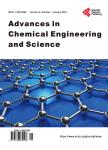Applicative Study(Part I):The Excellent Conditions to Remove in Batch Direct Textile Dyes(Direct Red,Direct Blue and Direct Yellow)from Aqueous Solutions by Adsorption Processes on Low-Cost Chitosan Films under Different Conditions
应用性研究(第一部分):不同条件下低成本壳聚糖膜吸附法从水溶液中脱除间歇直接纺织染料(直接红、直接蓝和直接黄)的最佳条件作者机构:Universitàdegli Studi“Aldo Moro”di BariDip.ChimicaBariItaly Consiglio Nazionale delle Ricerche CNR-IPCFUOS BariBariItaly Biotechnology DepartmentTextile Industry Research Association(AITEX)AlcoySpain Departamento Ciencia y Tecnología de AlimentosUniversidad Católica San Antonio de MurciaGuadalupeMurciaSpain Colorprint FashionSLAvda.Fco.Vitoria LaportaMuro de Alcoy(Alicante)Spain
出 版 物:《Advances in Chemical Engineering and Science》 (化学工程与科学期刊(英文))
年 卷 期:2014年第4卷第4期
页 面:454-469页
学科分类:1002[医学-临床医学] 100214[医学-肿瘤学] 10[医学]
基 金:supported by the European“DYES4EVER”(Demonstration of cyclodextrin techniques in treatment of waste water in textile industry to recover and reuse textile dyes LIFE12 ENV/ES/000309)within the LIFE+2012 program“Environment Policy and Governance project application”
主 题:Chitosan Film Textile Dyes Adsorption Processes Wastewater
摘 要:In recent years the development of chitosan (CH) based materials as useful adsorbent polymeric matrices is an expanding field in the area of adsorption science. Even though CH has been successfully used for dye removal from aqueous solutions due to its low cost, no considerations have been made about, for example, the effect of changing the pH of chitosan hydrogelor about the dehydrating effect of Ethanol (EtOH) treatment of chitosan film on the dyes removal from water. Consequently in our laboratory we carried out a study focusing the attention, mainly, on the potential use of CH films under different conditions, such as reducing the intrinsic pH, increasing the hydrophobic character by means of ethanol treatment and neutralization of CH films to improve their absorption power. Textile anionic dyes named Direct Red 83:1, Direct Yellow 86 and Direct Blue 78 have been studied with the aim of reducing the contact time of CH film in waste water improving the bleaching efficiency. Neutralized acid CH film and longtime dehydrated one result to be the better films in dye removal from water. Also the reduction of the CH solution acidity during the film preparation determines the decreasing of the contact time improving the results. The effect of initial dye concentration has been examined and the amount of dye adsorption in function of time t, qt (mg/cm2), for each analyzed film has been evaluated comparing the long term effect with the decoloration rate. A linear form of pseudo-first-order Lagergren model has been used and described. The best condition for removing all examined dyes from various dye solutions appears to be the dehydration of a novel projected CH film obtained by means of the film immersion in EtOH for 4 days. Also CH films prepared by well-known literature procedure and neutralized with NaOH treatment appear having an excellent behavior, however the film treatment requires a large quantity of water and time.



